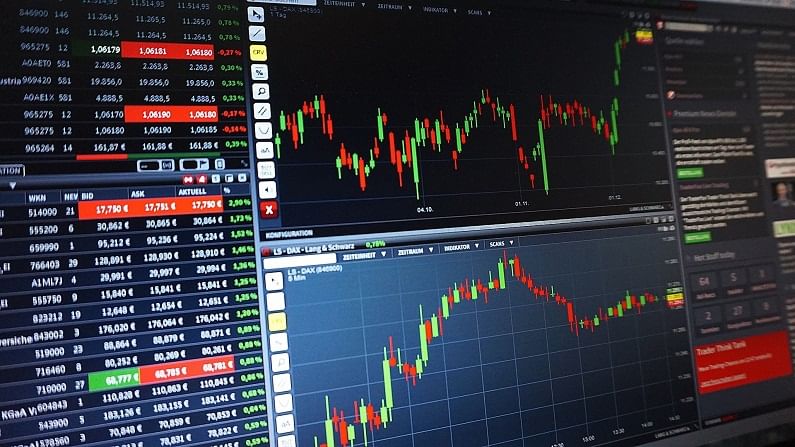How to become a master in short-term trading?
Trading is a zero-sum game, and only about 5% of the people actually make money consistently

Ever since Covid-19 hit us, stock markets have been the go to place for people to try their luck at making a living by trading. The markets rallying in such spectacular fashion has only put fuel to the fire.
The most common question asked to investors very often these days is “How to make a full time income from trading” almost like it has become a substitute to work at a regular business or a job.
As much as people are desperately looking for answers in this space, it is that observed an entire industry mushrooming and feeding off this greed.
The aim of this article is to provide a foundational understanding of how short-term trading works and how a trader should approach it.
Trading is a zero-sum game, and only about 5% of the people actually make money consistently. These are the people who have an arsenal of trading strategies that they always use over a while, and moreover, they have the discipline to follow it and imbibe prudent risk management.
There is no magic wand here. This is a business. If you treat it that way, there is significant wealth to be made. If you abuse it, however, the markets will take everything from you and then some more.
Let’s say we put 100 consistently profitable traders in a room and ask each to discuss his/her trading style and techniques. While each person would use different tools and methods, they would all be trying to achieve the same goal – generate profits.
Some may use fundamental analysis, some technical analysis, and a few others follow their gut feel and intuition. The point is that if all of the 100 traders are consistently profitable through using different techniques, the common underlying cannot be the tools or methods being used.
Trading profitably can be best understood by breaking it down into simple pieces and at the root lies a powerful principle of Expectancy. This is the common denominator among all profitable traders regardless of the tools they use.
Let me ask you this, would you prefer to risk Rs. 1,000 to make Rs. 2,000 or risk the same Rs. 1,000 to earn Rs. 5,000. The answer is straightforward, who wouldn’t want to make more for the same unit of risk?
There are 2 essential terms we need to familiarize ourselves with:
> Win percentage
> Win / Loss Ratio
The first is self-explanatory, and it merely states the accuracy of your trading. That is how often you are right.
The Win / Loss ratio is calculated as the average profitable trade divided by the average losing trade.
If, after 20 trades, the average winner is Rs. 5,000, and the average loser is also Rs. 5,000, then the win/loss ratio is equal to 1. When the average winner is Rs. 10,000, and the average loser is Rs. 5,000, then the win/loss ratio equals 2.
So think of the win/loss ratio of 1 to be the breakeven line. Our aim and goal are to be in positive Expectancy. So if a trader can maintain a win/loss ratio of 2, even if his win percentage is only 40%, he will still be profitable.
This is the essence of profitable trading.
Here is a strategy that will work in short term trading.
The premise of this approach is going to be trend following.
It is imperative that we first understand what trend following means and get the core conceptual understanding of why and how it works.
A trend is a sustained direction price of particular security follows. Trend following simply means taking and building positions in the direction of the Trend.
Instrument universe: Stocks from CNX NIFTY 500, highly liquid commodities like Gold, Silver & Crude oil.
System type: Long only
Time frame: Daily
Average holding period: 15-60 days
How many trades can you expect: 50-60 potential trades/year
Indicators used: Triple Exponential moving average (DEMA) 10 period, DEMA 25 period & DEMA 75 period
You will find these indicators on any charting software, you need to choose a daily time frame chart, and find the indicator section where you can type “Exponential Moving average” and select the same, in the preferences menu set the first moving average to period 10, then plot 2 more of the same indicator and select 25 & 75 periods respectively.
So now you should have a total of 3 indicators on the chart:
The Rules
Entry: When the 10-period DEMA crosses over both the 25 & 75-period DEMA When the 25 period DEMA crosses over the 75 period DEMA.
We need to enter on the close of the candle on which the above conditions are satisfied
Stop-Loss: When the trade moves against us, we get an indication that we need to book a loss and get out of that trade. In this particular strategy, we use the lowest low value (LLV) of the previous 3 candles as our stop-loss point.
Profit – Exit: Just as we set up stop losses for our exits, we also need to be mindful of when to take profits. In this strategy, we exit when the 10-period DEMA crosses below the 75-period DEMA.
(The author is CEO and Founder Of ThincRedBlu securities; views expressed are personal)

